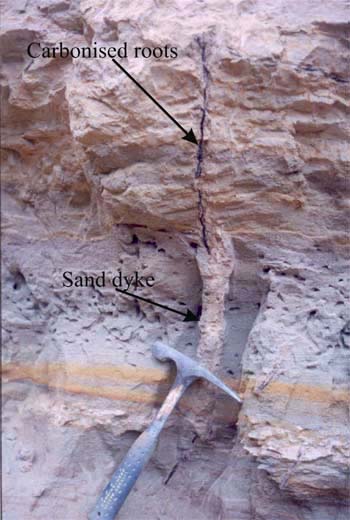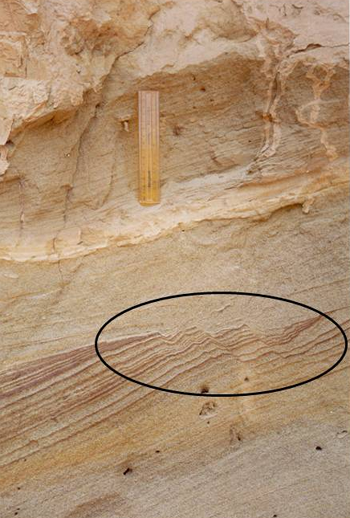Dec 29, 2025
Dec 29, 2025
 The presence of sand dykes in the terrace of Yamuna has all the circumstantial evidence to indicate that they have been formed as a result of an earthquake. But the question remains, when the earthquake occurred? Quoting Westnouskey et al, Joshi and his colleagues say, ‘The vertical uplift rate in this part of Himalaya is estimated as 6.9 plus minus 1.8 mm/year. Therefore, considering an uplift rate of about 7 mm/year the approximate age of the terrace may be around 15000 years Before Present (BP)’. Obviously the earthquake which created the sand dykes from the material of the terrace must have occurred after the terrace had been formed.
The presence of sand dykes in the terrace of Yamuna has all the circumstantial evidence to indicate that they have been formed as a result of an earthquake. But the question remains, when the earthquake occurred? Quoting Westnouskey et al, Joshi and his colleagues say, ‘The vertical uplift rate in this part of Himalaya is estimated as 6.9 plus minus 1.8 mm/year. Therefore, considering an uplift rate of about 7 mm/year the approximate age of the terrace may be around 15000 years Before Present (BP)’. Obviously the earthquake which created the sand dykes from the material of the terrace must have occurred after the terrace had been formed.  From their study these researchers conclude that at least one major earthquake occurred in this region during the late Holocene, which is the later part of last 10000 years. To narrow the gap further they have taken evidence available for the presence of water saturated sand in the area between 1300 and 800 years. The age of the dykes being 800 years BP, the earthquake could be older than that.
From their study these researchers conclude that at least one major earthquake occurred in this region during the late Holocene, which is the later part of last 10000 years. To narrow the gap further they have taken evidence available for the presence of water saturated sand in the area between 1300 and 800 years. The age of the dykes being 800 years BP, the earthquake could be older than that.
06-Feb-2011
More by : V. K. Joshi (Bijji)